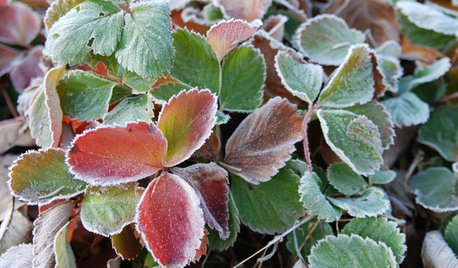Strawberry-like weed in lawn
ZoysiaSod
12 years ago
Related Stories

GARDENING GUIDESGreat Design Plant: Strawberries for All Seasons
An edible carpet? It's possible with a mass planting of this tough ground cover
Full Story
GARDENING GUIDES5 Ways to Naturally Win the Weed War
Show irksome weeds no mercy with these tricks for combating them sans chemicals
Full Story
GARDENING GUIDES5 Weed-Smothering Ground Covers
Let these landscape plants do the dirty work of choking out weeds while you sit back and enjoy the view
Full Story
HOUZZ TOURSHouzz Tour: From Overgrown Weeds to Picturesque Farmhouse Expanse
This once-neglected 100-acre South Carolina site now features a lake, a wood-filled farmhouse and a far-reaching view
Full Story
EDIBLE GARDENSNatural Ways to Get Rid of Weeds in Your Garden
Use these techniques to help prevent the spread of weeds and to learn about your soil
Full Story
GARDENING GUIDESGreat Design Plant: Bugle Weed, a Quick Ground Cover
It’s highly adaptable, suppresses weeds, reduces erosion and provide weeks of bright flowers. Just watch for invasiveness
Full Story
SAVING WATERHouzz Call: Are You Letting Go of Your Lawn?
Many facing a drought are swapping turf for less thirsty plantings. If you’re one of them, we’d like to hear about it
Full Story
GARDENING GUIDESWeed War: When and How to Use Chemical Herbicides
Before you spray, arm yourself with knowledge about which weed killers — natural or synthetic — are right for your yard
Full Story
GARDENING GUIDESLet's Weed Out 4 Native Plant Myths
Plant wisely for a garden that supports pollinators and requires less work
Full Story
GARDENING GUIDESTackle Weeds the Natural Way
Instead of dousing your yard with chemicals to wipe out weeds, let time and nature work their magic via smothering and solarization
Full Story







ZoysiaSodOriginal Author
tiemco
Related Professionals
Hyattsville Landscape Architects & Landscape Designers · Washington Landscape Architects & Landscape Designers · Waterbury Landscape Contractors · Corona Landscape Contractors · Davidson Landscape Contractors · Fort Hunt Landscape Contractors · Huntley Landscape Contractors · Lake Saint Louis Landscape Contractors · Mastic Beach Landscape Contractors · New Brighton Landscape Contractors · Roseville Landscape Contractors · Vashon Landscape Contractors · Cooper City Swimming Pool Builders · Elk Grove Swimming Pool Builders · Sunny Isles Beach Swimming Pool BuildersZoysiaSodOriginal Author
andy10917
ZoysiaSodOriginal Author
andy10917
ZoysiaSodOriginal Author
texas_weed
ZoysiaSodOriginal Author
jrodriguez90
ZoysiaSodOriginal Author